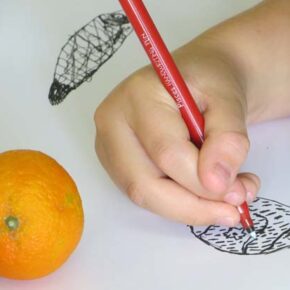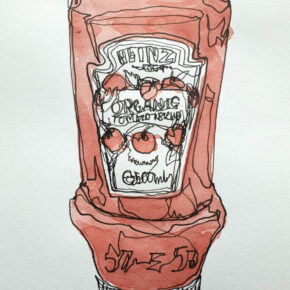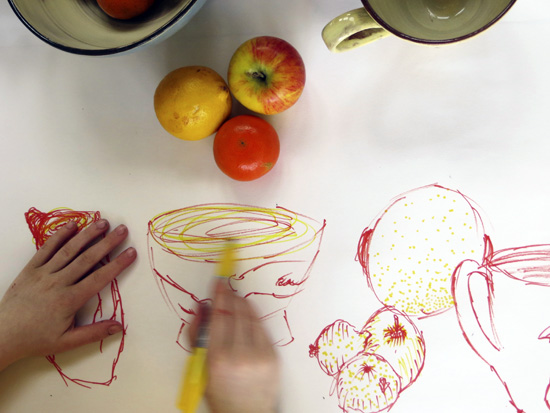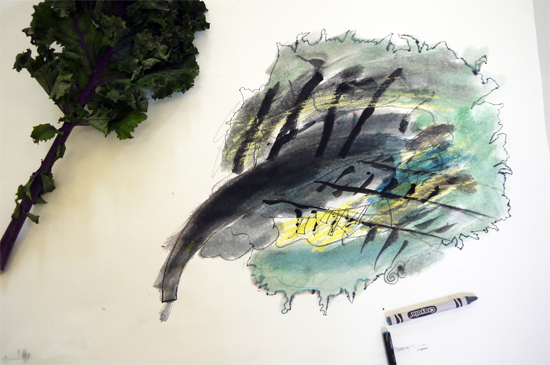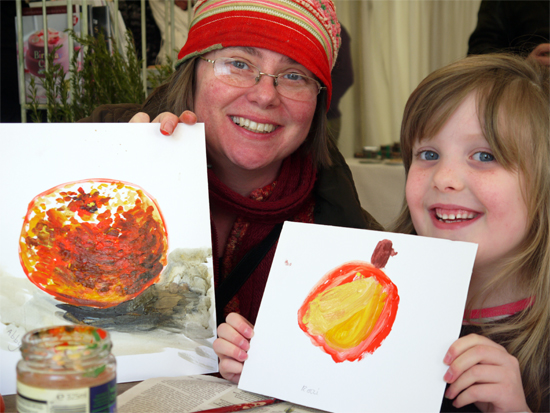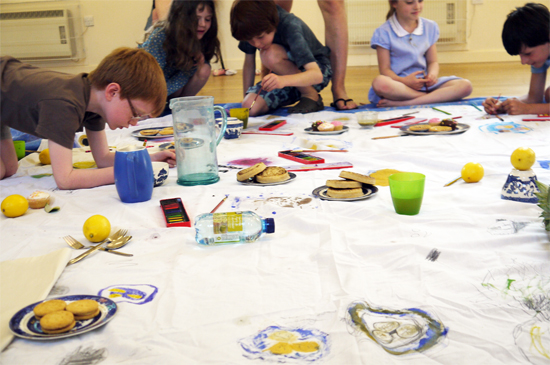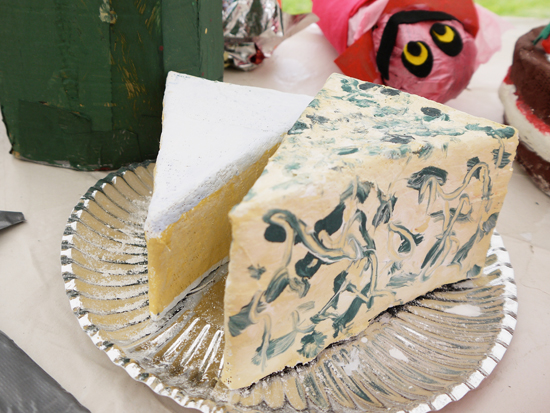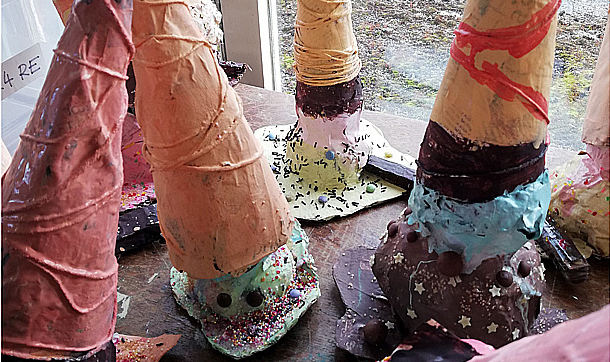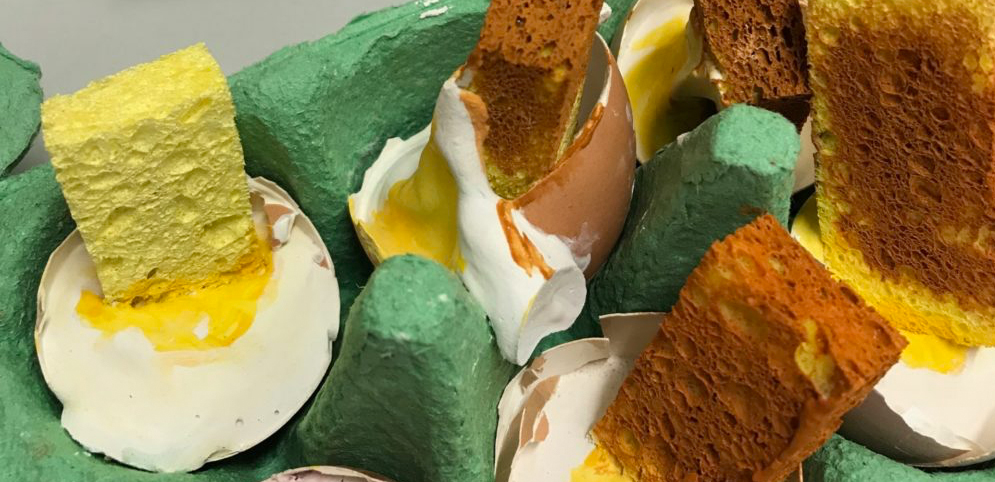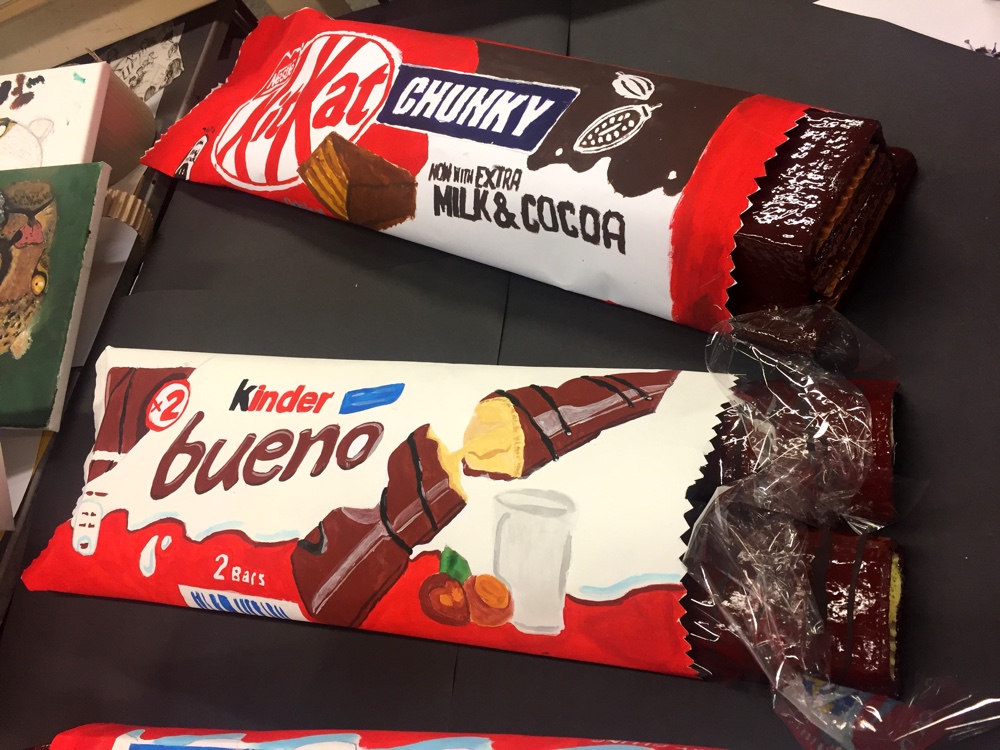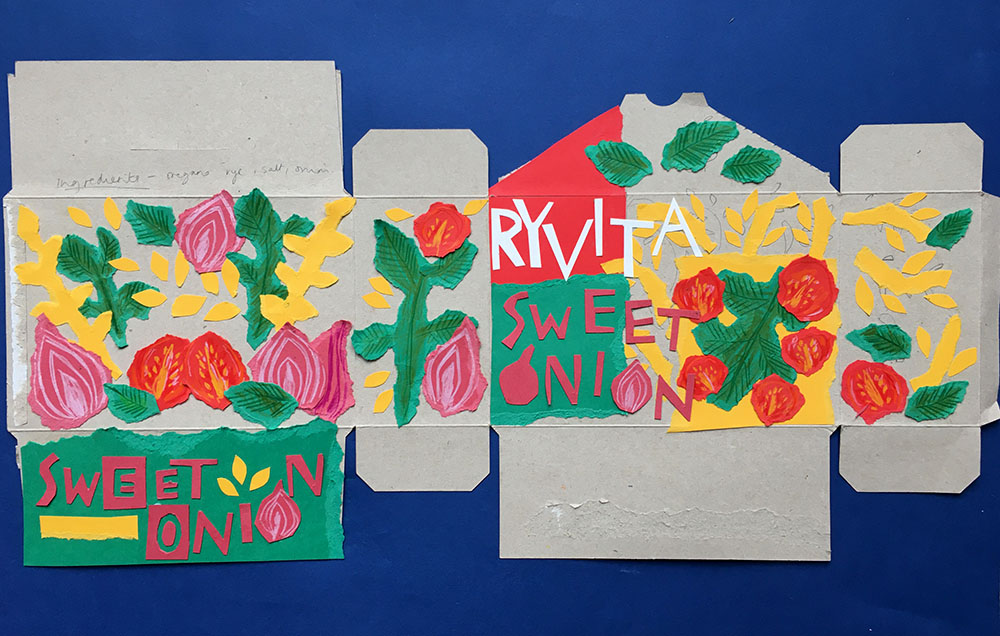To help teachers navigate AccessArt resources, and to build an understanding of some of our key approaches to enabling creativity, AccessArt is creating a series of “pathways” around themes and topics which can be used in schools. See the pathways as steeping stones to help you create exciting creative learning journeys.
If you use our resources in schools please do tag @accessart (Facebook and Twitter) and @accessartorguk (Instagram) with any outcomes – we always love to see them! Any questions pls email info@accessart.org.uk
This pathway provides a framework for teachers to explore food, both fresh and packaged, as inspiration for drawing, painting and sculpture.
As with all AccessArt approaches, the emphasis is on a journey of building independent learning through lots of experimentation and creative risk taking, and balances sketchbook and exploratory work with high quality and varied final outcomes.
The pathway can be condensed or expanded but on average will take 6-7 weeks. It is suitable for all ages, including children as young as KS 2 (ages 8 upwards).
Start Your Journey!
Step 1. Continuous Line Exercise to Help “See”
Use the Continuous Line Drawing resource to begin your journey.
The aim of the first step in the “Inspired by Food” pathway is to allow learners to take the time to look really closely at the food around them, so think carefully about your subject matter:
-
Work from life, not from photographs
-
Choose “natural” food such as fruit and vegetables etc, i.e. food which has not been processed or packaged
-
For a second activity choose processed or packaged food, for examples draw from tins, boxes, bottles
This step might take a single lesson working on sheets of paper or in a sketchbook. If time allows you may wish to revisit this exercise again throughout the project, using different source material.
Decide if you would like to explore food via drawing and painting, or via making and sculpture…
Towards Painting

Sketchbook Work

Step 2. Gestural Drawing Exercise to Explore Form
Adapt the Gestural Drawing resource to help children make drawings from a still life of food and /or packaging. Drawing from fresh food works best for this activity – gestural drawing suits natural/organic forms.
Encourage the children to make several sketches from different angles working on large sheets of paper or larger sketchbooks.
Use different coloured pencils to layer the mark making/gestural marks, rather than to capture the colours within the food.
Step 3. Watercolour Washes to Explore Materials
Explore colour and mark making through the Watercolour Washes resource.
This activity gives pupils the opportunity to explore new materials and techniques whilst being inspired by the forms and colours of food.
Working freely in this way helps children learn the skills needed to be respond to their own mark making, enjoying “accidents” which emerge during the process and helping them to become confident in their own creative decision making.
Towards a Final Outcome

Acrylic Painting on Board
Use acrylic on board to make small paintings of food as shared in the Food, Glorious Food resource.
Aim for pupils to make more than one painting each, working from life, and informed by their sketchbook work.
Or…
Communal Picnic Painting
Give pupils the opportunity to paint on fabric rather than paper, and create a communal artwork in the Summer Picnic resource.

Be Inspired By… Claire Harrup
Illustrator Claire Harrup creates illustrations of food for many clients. Introduce pupils to her work to show how how artists live, work and inspire others in our society.
Towards Sculpture

Teacher CPD
Read this post about Thinking and Making and apply the Design Through Making approach to your projects.
If you choose a project below which uses modroc, use the How to Use Modroc resource to develop your knowledge in that area.

Choose from One or More of These Projects…

Dropped Cone Sculptures
Create ice cream cone sculptures inspired by Claes Oldenberg.
Or…
Art Club Cafe
Make a cafe full of food using a variety of sculptural techniques using the Art Club Cafe resource
Or…
Making Sushi
Use the Making Sushi resource to explore food from other cultures using recycled materials.


